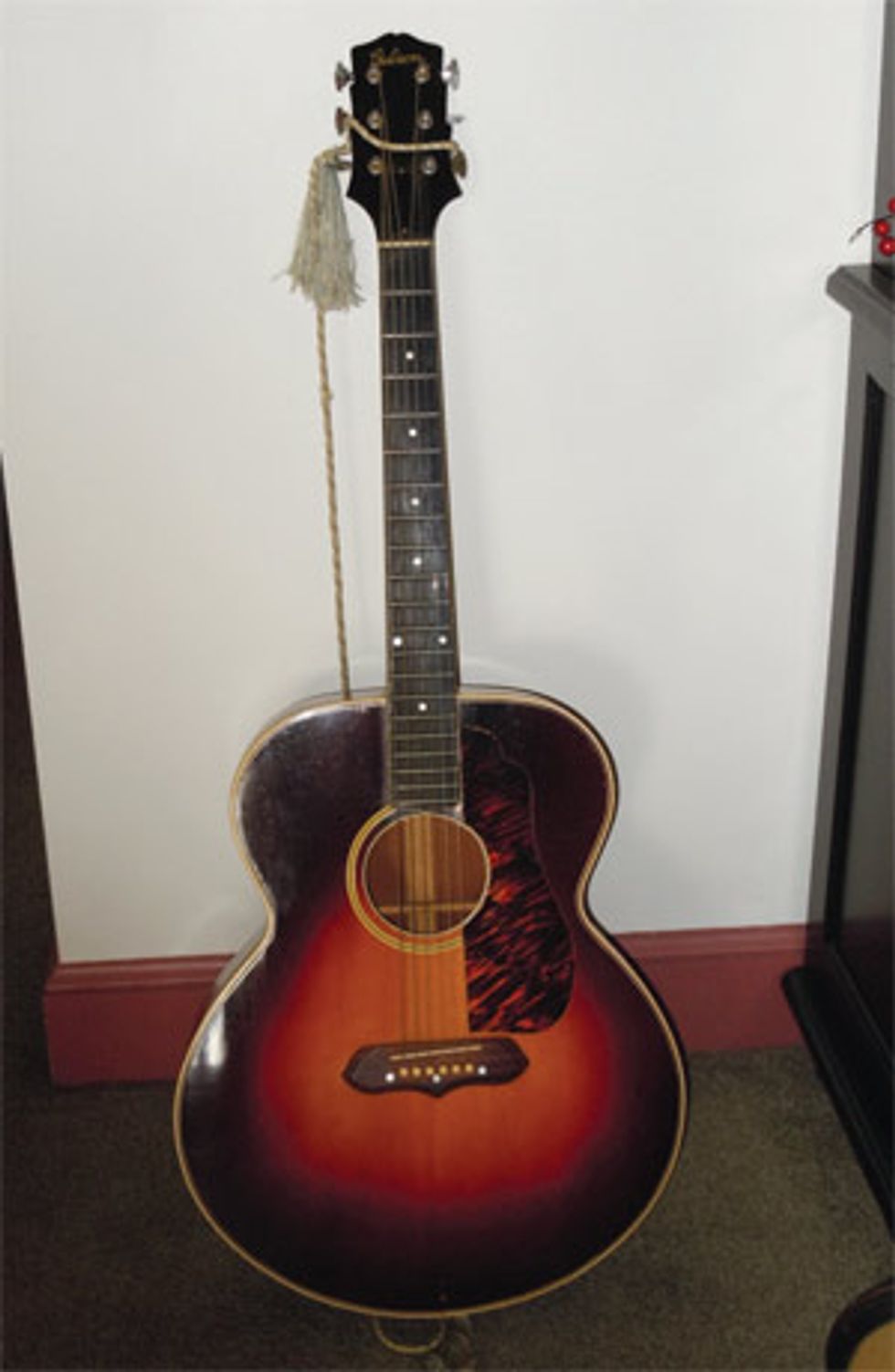The thrill is still not gone. After almost 40 years of coveting, owning, playing, building, fixing, studying, buying, and selling (generally being obsessed with guitars)—they still continue to give me the same thrill I got the first time I held one. Not every guitar, mind you, but every now and then it happens. This is the story of one of those guitars.
Back in the early ’90s, when I was working in my one-man shop at home, my neighbor Dan called and said he’d like to bring his father up to see the shop and to show me his dad’s old guitar. His dad played it regularly, but they wanted me to check it over and see if it needed any TLC. When I first saw the old case, my interest was piqued. Opening it did not disappoint—inside was a very nice, old Gibson SJ-100, circa 1940. It had been his dad’s guitar since the age of 16, when his uncle bought it for him around 1940 at a pawnshop in Roanoke, Virginia. While he remembered sending it back to Gibson for repair work not long after he received the guitar (he couldn’t recall exactly what was done), nothing else had been done to it since. This SJ-100 had a few cracks that didn’t seem to be going anywhere and the action was a bit high, but other than that, it was in really nice shape and absolutely oozed that old, Gibson mojo.
A little research showed it to be one of those wonderful, old Gibson anomalies. It had the old, stairstep-peghead design of a 1939 model, but the tiered bridge from a 1940 model. If the bridge had been changed during its early trip to Kalamazoo for repair, there was no evidence on the top. They were shocked to hear that it was a fairly valuable example of a rare model. In their eyes, it was just dad’s old guitar. I advised them to try and keep it humidified in the winter (even though it had survived more than 50 years without a thought of humidity control) and to consider getting the cracks stabilized. I also suggested they look into an insurance rider.
I didn’t see the guitar again for a number of years, but I would ask Dan about it now and then. His dad was still playing it—at gospel sings on Sunday mornings and evening campfires at the campground where he worked as a host in his retirement. I shuddered to think of this guitar being played out in the open (not to mention around a fire), but in his dad’s eyes, it was not a valuable collector’s piece or some kind of commodity. It was simply the only guitar he ever owned, and he wasn’t about to stop playing it just because it was worth some money.
Dan’s dad passed away a few years back and the guitar has been in his widow’s closet ever since. The guitar has, of course, continued to appreciate. And while the family is aware of its monetary value, the sentimental value still trumps any ideas of cashing in on this vintage instrument that represents so much of what they remember about him.
I did get a chance to see the guitar again just a few days ago. Dan brought it up one night when we were playing some old Hank and Lefty stuff. We tuned it up, toughed out the high action, and played the oldest stuff we could think of.
The recent publication of the excellent Spann’s Guide to Gibson 1902-1941, and a conversation with the author, helped me to learn more about this guitar. The order number from the factory and the serial number actually identify it as a 1939 model that was shipped to a store in Greenville, South Carolina, on September 21, 1939. The guitar must have been pawned in Roanoke fairly quickly since Gibson’s records show that Dan’s father returned it to the factory for repairs in late 1941. It was returned to him on February 1, 1942. There was no record of what repairs were performed, so the peghead/bridge mystery still remains.
 Jeff Huss
Jeff Hussco-owner of Huss & Dalton Guitar Company, moved to Virginia in the late ’80s to play bluegrass. He and his business partner, Mark Dalton, formed their company in 1995. Since then they’ve earned world-wide recognition for their high-end, boutique guitars and banjos.











![Rig Rundown: Russian Circles’ Mike Sullivan [2025]](https://www.premierguitar.com/media-library/youtube.jpg?id=62303631&width=1245&height=700&quality=70&coordinates=0%2C0%2C0%2C0)






